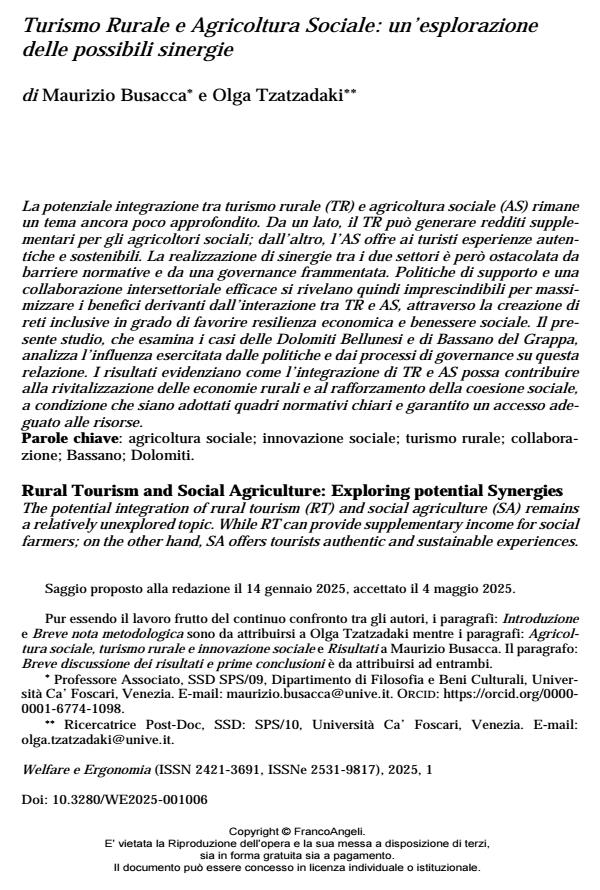Rural Tourism and Social Agriculture: Exploring potential Synergies
Journal title WELFARE E ERGONOMIA
Author/s Maurizio Busacca, Olga Tzatzadaki
Publishing Year 2025 Issue 2025/1
Language Italian Pages 18 P. 93-110 File size 110 KB
DOI 10.3280/WE2025-001007
DOI is like a bar code for intellectual property: to have more infomation
click here
Below, you can see the article first page
If you want to buy this article in PDF format, you can do it, following the instructions to buy download credits

FrancoAngeli is member of Publishers International Linking Association, Inc (PILA), a not-for-profit association which run the CrossRef service enabling links to and from online scholarly content.
The potential integration of rural tourism (RT) and social agriculture (SA) remains a relatively unexplored topic. While RT can provide supplementary income for social farmers; on the other hand, SA offers tourists authentic and sustainable experiences. However, the realisation of synergies between these sectors is often constrained by regulatory barriers and fragmented governance. Supportive policies and effective cross-sector collaboration are therefore essential to maximise the benefits derived from the interaction between RT and SA, through the creation of inclusive networks capable of fostering economic resilience and social well-being. This study investigates how policies and governance processes shape the relationship between rural tourism and social agriculture, drawing on case studies from the Dolomiti Bellunesi and Bassano del Grappa regions. The results demonstrate that the integration of RT and SA can significantly contribute to the revitalization of rural economies and the enhancement of social cohesion, provided that clear regulatory frameworks are in place and adequate access to resources is guaranteed.
Keywords: social agriculture; social innovation; rural tourism; collaboration; Bassano; Dolomites.
Maurizio Busacca, Olga Tzatzadaki, Turismo Rurale e Agricoltura Sociale: un’esplorazione delle possibili sinergie in "WELFARE E ERGONOMIA" 1/2025, pp 93-110, DOI: 10.3280/WE2025-001007